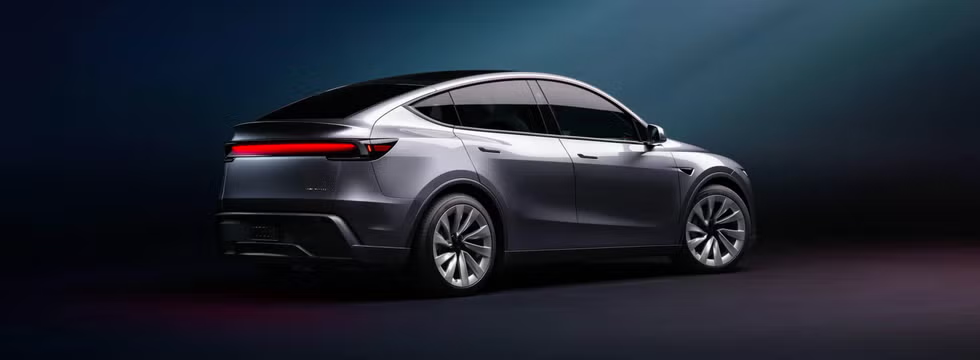
2025 The Tesla Model Y was unveiled, and a mid-year Juniper update is anticipated in Australia.
The 2025 Tesla Model Y electric SUV, reportedly codenamed Juniper, has been unveiled with fresh styling, an updated interior, and an extended driving range, ahead of its anticipated arrival in Australia in May.
This marks the most significant update since the Model Y’s initial US launch five years ago, incorporating key enhancements from the latest Model 3. One notable change is the relocation of the gear selector to the touchscreen. However, Tesla has differentiated its top-selling SUV by introducing unique ‘split’ headlights and a rear light bar, making it more distinguishable from the Model 3 sedan in traffic.
Interestingly, despite the Model 3 removing the indicator stalk, Tesla has chosen to retain it in the Model Y after facing widespread criticism.
Initially, the Australian version of the 2025 Model Y will be offered in a ‘Launch Series’ with two variants: Rear-Wheel Drive (RWD) and Long Range All-Wheel Drive (AWD). Prices start at $63,400 and $73,400 respectively, excluding on-road costs. These prices represent increases of $7,500 and $3,500 compared to previous models, following substantial price cuts last year that reduced the outgoing model’s cost by nearly $10,000 over two months.
The Launch Series includes metallic paint and upgraded 20-inch wheels as standard, although these features may become optional after the limited release sells out. Additional Launch Series-exclusive features include a special badge on the tailgate, branded sill plates, puddle lights, center console badging, and black suede dashboard trim.
Customers who order a Model Y now can expect deliveries to begin in May 2025, barring any delays. All models will have five seats. A new Performance variant, featuring a higher-output electric motor and distinctive styling akin to the Model 3 Performance sedan, might be introduced later, though this is yet to be confirmed.
The driving range has improved by 11 to 18 kilometers, depending on the model, due to enhanced aerodynamics. However, the battery packs remain unchanged, with the RWD using a 60kWh lithium iron phosphate pack and the Long Range featuring a circa-79kWh nickel-manganese-cobalt unit.
Performance has seen an upgrade, with the Launch Series models capable of accelerating from 0 to 100km/h in 5.9 seconds for the RWD and 4.3 seconds for the AWD. The RWD’s acceleration time is a full second quicker than before, aligning with pre-update Chinese models, while the AWD is 0.7 seconds faster. These improvements are partly due to the inclusion of the optional Acceleration Boost software upgrade as a standard feature in the Launch Series, which is expected to return to the options list once the series sells out.
The rated driving range has increased to 466km for the RWD and 551km for the Long Range AWD, according to European WLTP testing. All models have a top speed of 201km/h, similar to the latest Model 3, likely due to new low rolling-resistance tires that enhance efficiency.
Tesla has also revised the suspension for the second time in three years to address feedback about a firm ride. The updated suspension reportedly improves the Model Y’s ability to absorb bumps by 51%. Additionally, more responsive steering is claimed.
The 2025 Model Y’s design features are distinct from the latest Model 3. The SUV adopts unique split headlights, with daytime-running lights positioned higher and main LED beams lower. The sportier bumper and lower, flatter bonnet aim to reduce air resistance. Other design changes include new 19-inch ‘Crossflow’ and 20-inch ‘Helix 2.0’ alloy wheels, restyled mirror caps, and a full-width LED tail-light bar featuring illuminated ‘TESLA’ lettering. The new tailgate and lower bumper, which now houses the license plate, complete the rear design updates. Additionally, a new Glacier Blue color replaces Solid Black in the Australian market.
Tesla promises a quieter and smoother driving experience with an updated wheel and tire package, redesigned body castings that reduce parts from 70 to one, and significant reductions in road, suspension impact, and wind noise. New glass roof and windscreen coatings reflect seven times more solar energy.
A new front bumper camera with a dedicated water jet has been added, likely enhancing driver-assistance features and aiding low-speed parking maneuvers.